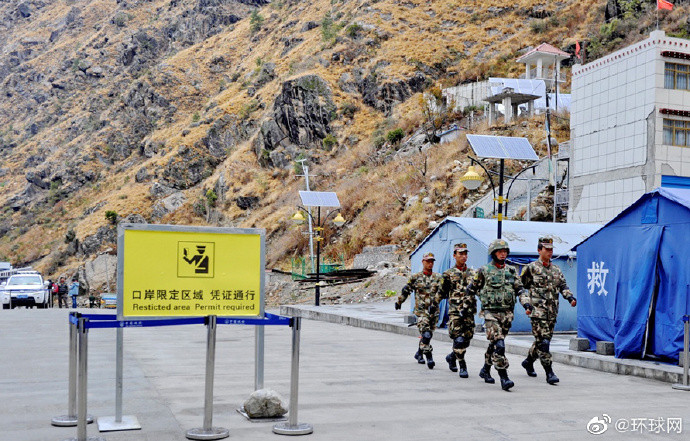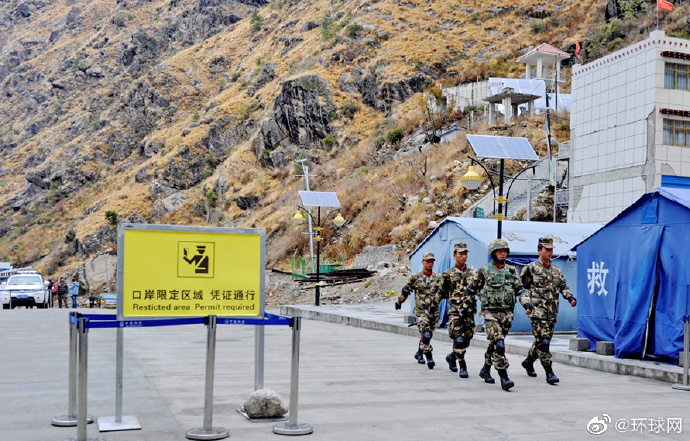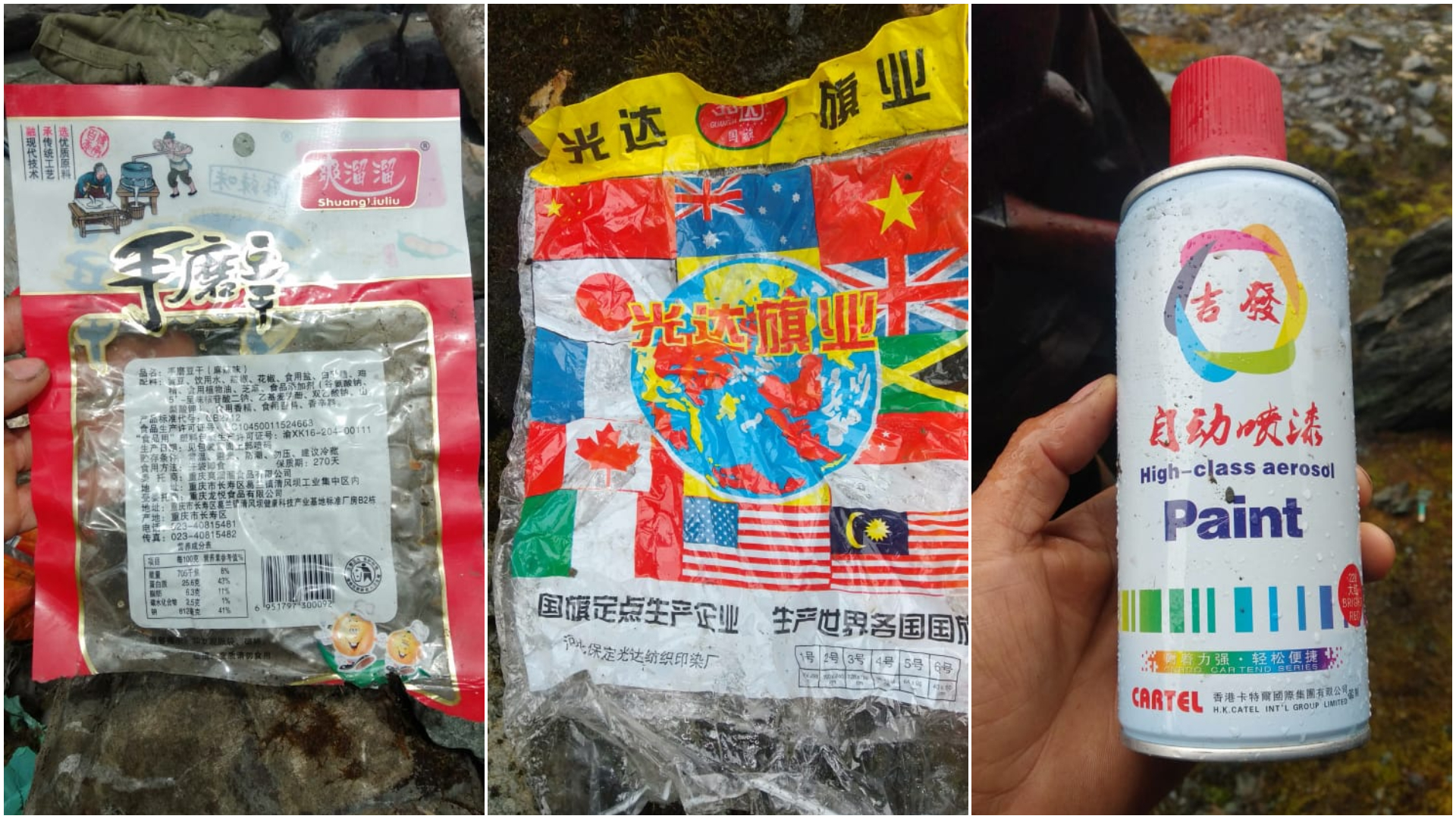
Chinese Villages Have Sprouted Close to the Indian Border. Here’s What it Means.
December 11, 2020At least three villages have sprung up this year in the strategically sensitive region along the de facto border between India and China, called Line of Actual Control (LAC).
Satellite images of these villages, provided to VICE World News by the American imaging company Planet Labs on Dec. 9 (see below), show the continued strategic rivalry between the world’s two most populous, nuclear-armed countries.
The villages are built approximately five km, or three miles, from Bum La pass in the northeastern Indian state of Arunachal Pradesh, which is not recognised by China as part of India. China, instead, calls the region South Tibet.
These villages have raised anxiety for India, especially after the previous months saw violent sparring with the Chinese army that led to the death of Indian soldiers. China did not disclose its casualties in the conflicts. The border dispute raised fears that the two countries could be drawn into war.
Just a week before these satellite images emerged, there were satellite visuals of villages at China’s borders with Bhutan. One particular village was constructed 2.5 km inside the Bhutanese border. This was especially concerning for Indian security experts because the Chinese village was just seven kms from Doklam, a border area with Bhutan and India where Indian and Chinese armies had a military stand-off in 2017.
Last month, Global Times, a Chinese state-run tabloid, responded to the controversy, stating that this village is, in fact, within the Chinese territory. The village—which has amenities such as a public square, health room, supermarket and a plastic runway—exemplifies “great improvement of China’s infrastructure construction capacity” despite the tough terrain, said the report.
“There are many places where Chinese border people have lived and grazed for a long time,” stated the report. “But more people are needed along the border to truly safeguard China's territorial sovereignty.”
VICE World News reached out to the Indian Army to confirm the report but did not receive a response at the time of publishing this piece.
Brahma Chellaney, a professor of Strategic Studies at the Center for Policy Research in New Delhi, told VICE World News that China’s strategy of territorial aggrandizement in the Himalayas is akin to its expansionism in the South China Sea. “By quietly constructing new villages on the borders of India, Nepal and Bhutan, China is seeking to assert its territorial claims,” he said.
Chellaney added that in the central sector of the LAC, opposite the contested Barahoti plains in northern India, Chinese forces have installed “new container housing modules”.

“In fact, China’s territorial size has more than doubled since it came under communist rule in 1949. Yet it is still engaged in expanding its frontiers,” Chellaney said.
In August, this year, Global Times published another report that documented Tibetan herders living close to China’s borders with India being given accommodations set up by Chinese authorities. “For residents who set up a home close to the borderline, herding is patrolling and living is guarding the frontier,” the report said.
Experts see this as a part of China’s gradual land-grabbing tactics, also termed as “salami-slicing”—or asserting de facto control over territory in a gradual manner. In August, VICE World News reported on China using herders to take control of Indian lands.
The LAC is a conceptual demarcation between Indian and Chinese territory. An official border has never been marked on map since both disagree on its details: India considers the LAC to be 3,488 km long, while China considers it to be around 2,000 km long.
The ambiguity of the borders have also resulted in the Chinese People’s Liberation Army (PLA) “abducting” Indian civilians, who had sauntered onto the other side while foraging or fishing.
“[Chinese President] Xi Jinping has been talking about creating holistic national security for the last couple of years, which entails having people at the borders,” Manoj Kewalramani, a fellow of China studies at The Takshashila Institution, an Indian think tank, told VICE World News. “Once you have physical structures and settlements, it’s difficult to change the status quo.”
China is also known to have been tightening its hold over security regulations in Tibet’s border region for the last few years. This is being done to battle risks of terrorism and “separatism”. Human Rights Watch has been flagging alarming levels of surveillance on Tibetans for almost a decade, while official Chinese documents describe the system as an improvement of public access to basic services.
“This is a decades-old plan by China, of managing and controlling the Tibetan population and putting them in places where the country has strategic or nationalistic interests,” Srikanth Kondapalli, a Chinese studies professor at Jawaharlal Nehru University, New Delhi, told VICE World News.
Kondapalli added that Tibetans, who are generally migrants and have different cultivation patterns, have been resisting this remigrating and repopulating drive by the Chinese authorities. “These settlements are heavy with surveillance and are meant to control the Tibetans,” he added.
Dadu Pading, an activist and a resident of Daporijo town in Arunachal Pradesh—which is 200 kms from Indian border with China in Arunachal Pradesh—told VICE World News that the proximity with the Chinese borders is a cause of apprehension for Indian civilians, too. In September, his Pading’s brother was one of the five men picked up by the PLA in September. He was released after five days.
“We often find traces of Chinese movement at our side of the border, such as Chinese wrappers and goods,” said Pading. “However, the road along the border is not motorable at all. Even the Indian Army personnel walk for a few days to get there.”

The lack of development—in sharp contrast to China’s rapid development on the other side—was highlighted this year after the “abductions”. In some of these border towns, there are no phone connections, electricity or roads. Kondapalli said that development on the other side, including the construction of villages, could “certainly be attractive” to local Indian residents. “Since we haven’t developed our border areas, they would be tempted to go to the other side for work,” he said.
Diminishing population in some Indian border villages have been a major concern for the defence forces. In July this year, data suggested that at least 16 villages from India’s side of the border with China are empty. Development on Indian side of the border is ongoing, albeit slow and with multiple challenges, given the harsh terrain.
Indian experts say that the construction of villages adds up to the larger problem. “China has brought people from elsewhere, including Han Chinese, to settle in these newly established border villages,” Chellaney said. “The Chinese Communist Party has always excelled in creating new facts on the ground.”
Follow Pallavi Pundir on Twitter.
